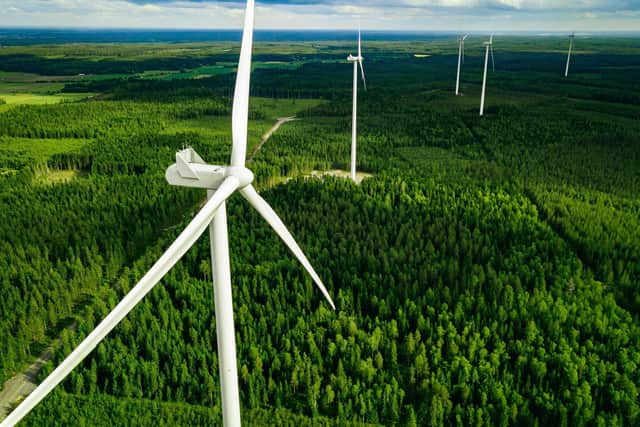Wind turbine benefits outweigh disadvantages - David Behrens
It’s his impression of the changing landscape around his new home in Normandy and it’s as quintessentially Norman as the Bayeux Tapestry. Yet were he to paint it five years from now, it might look completely different.
The same is true of his previous surroundings in East Yorkshire, where his impressionistic rural canvases were admired because, like John Constable before him, he had conjured a countryside that exists only in the imagination and made it palpable.
Advertisement
Hide AdAdvertisement
Hide AdThe reality is less fanciful. The East Riding is no longer a continuous yellow carpet of rapeseed but a pincushion of towering turbines dotted across the horizon. There are more here than anywhere else in England, and this week the first of four huge transformers arrived at Cottingham to hasten the completion of the world’s largest offshore wind farm, just off the coast.


Normandy is about to see a similar development.
But are these white giants an eyesore, or an elegant statement of the need to balance the 21st century requirements of fuelling our homes and protecting the planet? Last month, Grant Shapps, who at the time of writing is still Transport Secretary, expressed the former view, in a political game of tilting at windmills; taking aim at enemies that are as imaginary to him as the unspoilt countryside was to Constable.
I have to declare an interest, for the vista from the upper tier of the new Behrens Towers takes in several dozen turbines, both on and offshore. It’s subjective, of course, but to me they don’t obstruct the view; they are part of it – graceful, mechanical ballet dancers that gyrate on the horizon.
My neighbours seem similarly benign. There are many unwelcome facets of modern life on which they are keen to hold forth, but wind farms are not amongst them.
Advertisement
Hide AdAdvertisement
Hide AdThis isn’t the case across the whole East Riding. Eight years ago, the residents of 20 inland villages marched through Beverley to raise their concerns that the constant churn of the rotors was making people feel like prisoners in their own homes. In rural parts of West Yorkshire, too, I know of families who fear for their children’s safety as they pass under the rotating blades on their way to school.
So clearly, the further away they are from people, the better. But there are far worse blots on the landscape than these – especially when you compare them to gasometers, winding towers and other industrial relics that used to cast their long shadows over entire communities.
Next to them, wind turbines are a breath of fresh air. Yet the argument against them, as espoused by Mr Shapps and oft-repeated by those who live nowhere near one, is powerful and persistent. It’s also brimming with cant and hypocrisy.
Back in 2014, David Cameron maintained that people were “fed up” with onshore wind farms and that he would sooner see fracking rigs in his Oxfordshire constituency. It must have been a coincidence that when the next round of drilling licences was announced 10 months later, his part of the Cotswolds was bypassed completely.
Advertisement
Hide AdAdvertisement
Hide AdBut the overwhelming argument in favour of turbines is scientific, for the Yorkshire coast is to wind power what Saudi Arabia is to oil. The North Sea is where the wind is better and the sea bed shallower than almost anywhere else, and where turbines can be planted most economically. That’s a goldmine we ought to be excited about.
As for those onshore, we might learn from California, where the thousands of turbines planted along the San Gorgonio Pass were seen at first as a blight on the beautiful mountain scenery and a threat to tourism. Now, tourists come just to see them.
The counter argument seems to hinge on an obsession with preserving an English landscape that Constable handed down to us but was obsolete even before he painted it. If he were here now, he might have seen it differently – with a few turbines and a telephone box next to the Hay Wain, and perhaps a Ford Fiesta for good measure. David Hockney may yet do so.
And ultimately, it doesn’t matter whether we blow hot or cold, because the benefits of turbines outweigh their disadvantages. We will learn to live with them – and perhaps even love them.